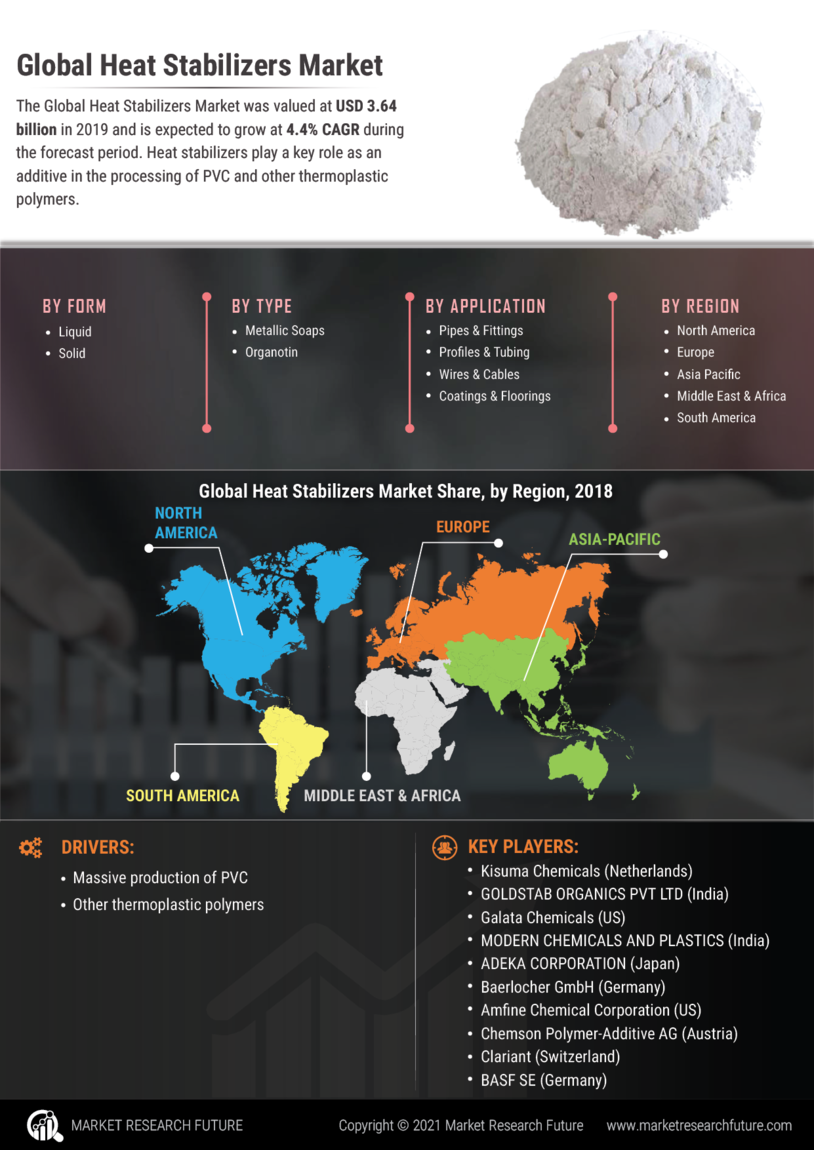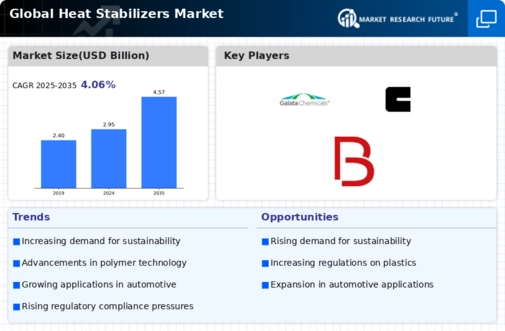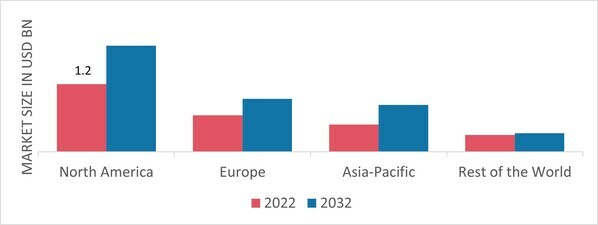Heat Stabilizers Market Summary
As per Market Research Future Analysis, the Global Heat Stabilizers Market was valued at USD 2.95 Billion in 2024 and is projected to reach USD 4.57 Billion by 2035, growing at a CAGR of 4.06% from 2025 to 2035. The market growth is driven by the increasing demand for plastic products in automotive, construction, and packaging sectors. The rise in demand for organic thermal stabilizers free of volatile organic compounds is also a significant factor. The market is further supported by the growing use of PVC in various industries, particularly in pipes and fittings, which enhances thermal stability and product longevity.
Key Market Trends & Highlights
Key trends driving the heat stabilizers market include the following:
- Market Size in 2024: USD 2.95 Billion.
- Projected Market Size by 2035: USD 4.57 Billion.
- CAGR from 2025 to 2035: 4.06%.
- Dominant Segment: Pipes & Fittings, driven by increasing construction activities.
Market Size & Forecast
| 2024 Market Size | USD 2.95 Billion |
| 2035 Market Size | USD 4.57 Billion |
| CAGR (2024-2035) | 4.06% |
Major Players
Key players include Kisuma Chemicals (Netherlands), GOLDSTAB ORGANICS PVT LTD (India), Galata Chemicals (US), MODERN CHEMICALS AND PLASTICS (India), ADEKA CORPORATION (Japan), Baerlocher GmbH (Germany), Amfine Chemical Corporation (US), Chemson Polymer-Additive AG (Austria), Clariant (Switzerland), BASF SE (Germany), BRUNO BOCK (Germany), and REAGENS SPA (Italy).















Leave a Comment